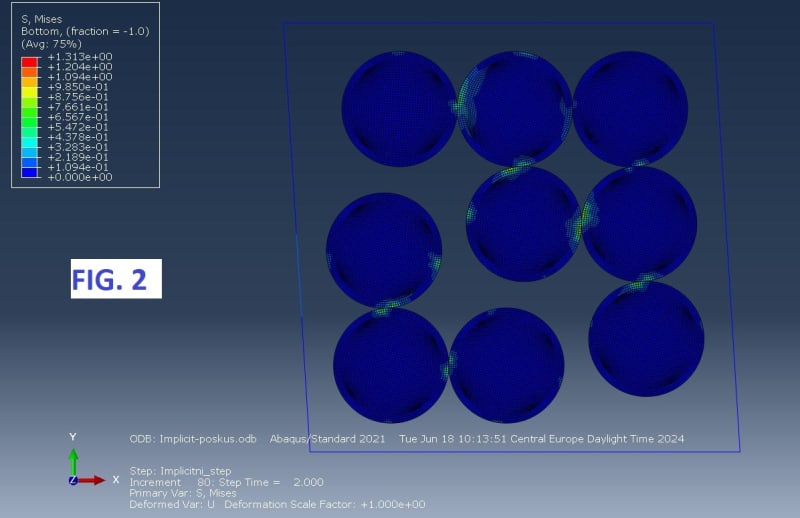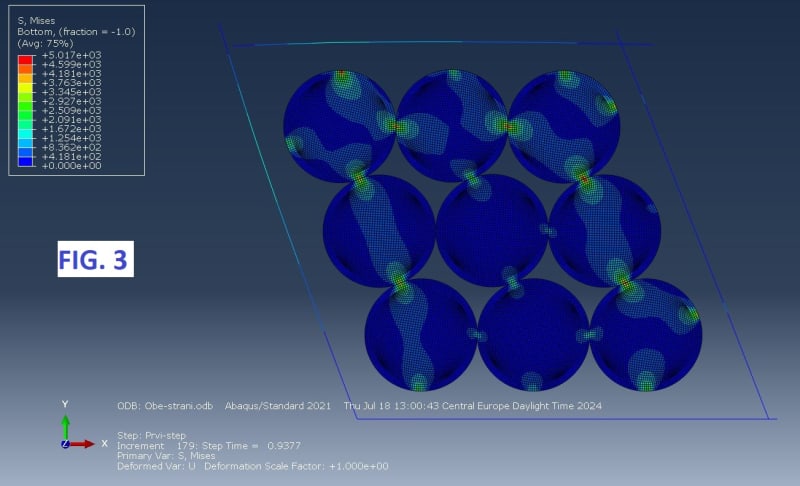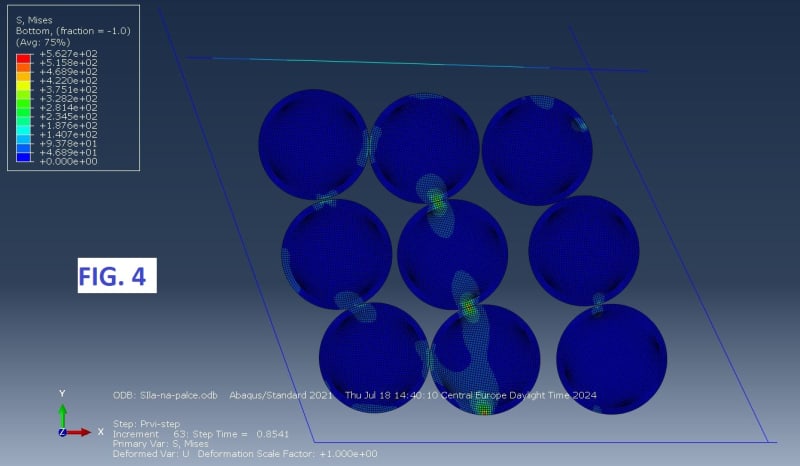Glazer281
Student
- Jul 22, 2024
- 1
Hello to everyone,
I am fairly new in the field of more advanced finite element analyses, so please bare with me, if the answer is too obvious.
I am studying an assembly with 9 cylinders stacked on top of each other with d = 10 mm and h = 10 mm and 4 housing pieces, both made from a standard grade steel. The assembly must be actuated to an upright position, while also pressing the housing pieces together at the cylinders to always maintain contact between all 13 components, as shown in FIG. 1. The reaction force in the crossed joint is measured.

I have first tried a version, where there is no force F pressing the housings against the cylinders. Bottom housing piece is encastred and there is a 16 mm displacement to the right on the top housing piece. A single, static general step is used with NLgeom on, step time of 2 seconds. The housing pieces are modeled as beams. The joints are modeled with coupling constrains. Interactions with penalty and hard contact behavior are used for all contact points in the assembly. and Results are shown in FIG. 2.

As you can see, the cylinders are moving in a completely unnatural way, sort of floating in the air. The behavior is the same. when a gravity force is applied. Since the cylinders have no BCs at all, I am assuming that this is the source of the problem? Does Abaqus not support free body movement? The analyses also never really converge, a "too many attempts made" error always emerges at some point, regardless of the increment size used. Would a DEM method make more sense here? Or perhaps and explicit analysis?
I have tried 2 versions with the pressing force applied, FIG. 3 with a line load and FIG 4. with a concentrated force on the ends of the housings. To make it at least look like it is behaving correctly, the loads are unrealistically high, over 3000 N/mm of line load.


Thank you very much in advance for any help!
Robert
I am fairly new in the field of more advanced finite element analyses, so please bare with me, if the answer is too obvious.
I am studying an assembly with 9 cylinders stacked on top of each other with d = 10 mm and h = 10 mm and 4 housing pieces, both made from a standard grade steel. The assembly must be actuated to an upright position, while also pressing the housing pieces together at the cylinders to always maintain contact between all 13 components, as shown in FIG. 1. The reaction force in the crossed joint is measured.

I have first tried a version, where there is no force F pressing the housings against the cylinders. Bottom housing piece is encastred and there is a 16 mm displacement to the right on the top housing piece. A single, static general step is used with NLgeom on, step time of 2 seconds. The housing pieces are modeled as beams. The joints are modeled with coupling constrains. Interactions with penalty and hard contact behavior are used for all contact points in the assembly. and Results are shown in FIG. 2.

As you can see, the cylinders are moving in a completely unnatural way, sort of floating in the air. The behavior is the same. when a gravity force is applied. Since the cylinders have no BCs at all, I am assuming that this is the source of the problem? Does Abaqus not support free body movement? The analyses also never really converge, a "too many attempts made" error always emerges at some point, regardless of the increment size used. Would a DEM method make more sense here? Or perhaps and explicit analysis?
I have tried 2 versions with the pressing force applied, FIG. 3 with a line load and FIG 4. with a concentrated force on the ends of the housings. To make it at least look like it is behaving correctly, the loads are unrealistically high, over 3000 N/mm of line load.


Thank you very much in advance for any help!
Robert
